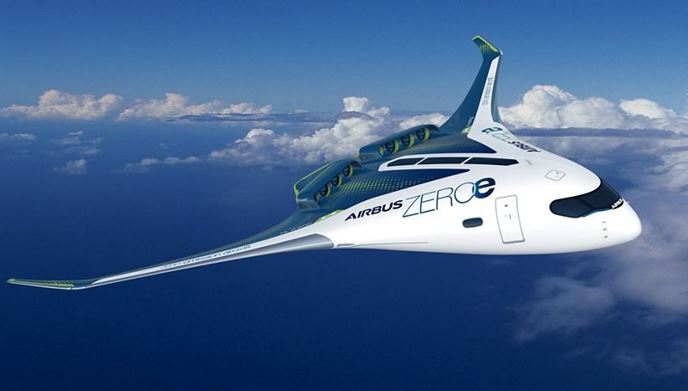
Sept. 22 (UPI) — Airplane-maker Airbus unveiled concepts on Monday for what it said are the world’s first hydrogen-powered, zero-emissions commercial aircraft, which could enter service within 15 years.
The concepts, code-named “ZEROe,” show airliners that seat between 100 and 200 passengers — two of which would use modified gas turbine combustion engines that run on hydrogen instead of jet fuel.
The French company said it aims to operate the planes by 2035.
“This is a historic moment for the commercial aviation sector as a whole and we intend to play a leading role in the most important transition this industry has ever seen,” Airbus CEO Guillaume Faury said in a statement.
“The concepts we unveil today offer the world a glimpse of our ambition to drive a bold vision for the future of zero-emission flight. I strongly believe that the use of hydrogen — both in synthetic fuels and as a primary power source for commercial aircraft — has the potential to significantly reduce aviation’s climate impact.”
In one concept, a turbofan jet airliner seating as many as 200 passengers would tap liquid hydrogen stored in tanks located behind the rear pressure bulkhead to produce a range of at least 2,000 nautical miles. Another concept is similar, but with a turboprop design capable of flying at least 1,000 miles.
A third concept is a “blended-wing body” design that abandons the thin fuselage of current planes and provides “multiple options” for hydrogen storage and cabin layout.
Commercial aviation is responsible for about 2.4% of global carbon emissions and totaled more than 900 million metric tons in 2018, according to the International Council on Clean Transportation. That level represented a 32% increase in emissions over the previous five years.
Airbus’ ambition to introduce hydrogen-powered commercial aircraft within 15 years depends on “decisive action from the entire aviation ecosystem,” including government and industry leaders, it said.
The company called for the build-out of “significant hydrogen transport and refueling infrastructure” at airports and government support for research and technology.





